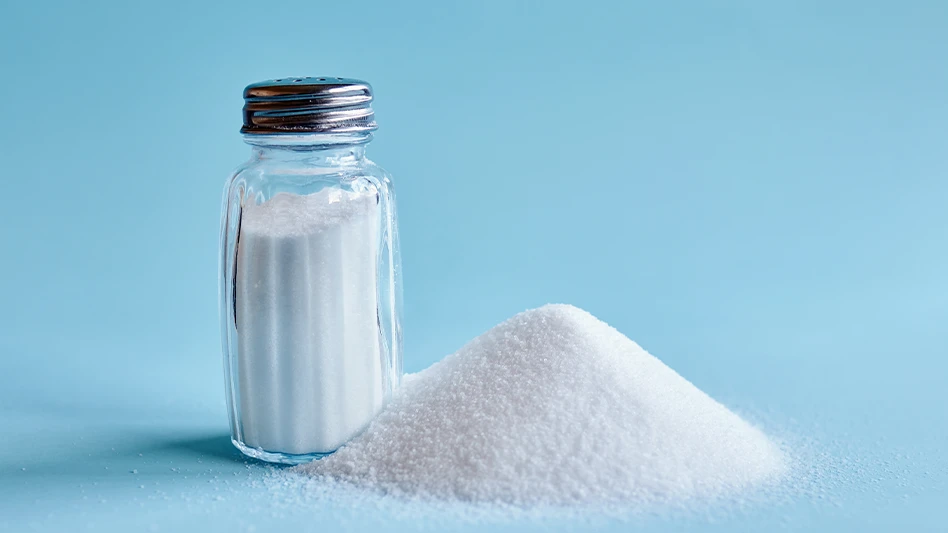
Melica, Adobe Stock
SILVER SPRING, Md. — The U.S. Food and Drug Administration (FDA) will soon propose to amend the standards of identity (SOIs) to permit the use of salt substitutes in foods for which salt is a required or optional ingredient. The proposed rule would provide manufacturers with flexibility and facilitate industry innovation to reduce sodium in standardized foods. The FDA is making available the pre-publication text of the Federal Register notice.
The upcoming proposed rule is part of the Biden-Harris Administration’s National Strategy on Hunger, Nutrition, and Health. The National Strategy provides a roadmap of actions the federal government will take to end hunger and reduce diet-related diseases by 2030 – all while reducing disparities. The National Strategy was released in conjunction with the first White House Conference on Hunger, Nutrition, and Health in over 50 years, hosted by President Biden on September 28, 2022. The upcoming proposed rule also complements the goals of the FDA’s voluntary sodium reduction targets for processed, packaged and prepared foods.
SOIs typically describe what ingredients a food must contain and what is optional. They may describe the amount or proportion of ingredients or components. Some SOIs also prescribe a method of production or formulation. There are more than 250 SOIs, and they include products like milk, milk chocolate, various breads, various cheeses and ketchup. Foods with SOIs are often referred to as standardized foods.
Salt substitutes are currently used in many non-standardized foods in the U.S., but most FDA SOIs do not permit the use of salt substitutes. The proposed rule would use a “horizontal” approach for SOIs, under which a single rule would apply to multiple SOIs across several categories of standardized foods. Specifically, the proposed rule would amend the 80 SOIs that specify salt as a required or an optional ingredient. Because these 80 SOIs are referenced in other SOIs, 140 of the 250 SOIs currently established for a wide variety of foods could be affected. The proposed rule does not list permitted salt substitutes but defines them as safe and suitable ingredients used to replace some or all of the added sodium chloride and that serve the functions of salt in food. The extent to which salt can be replaced depends on the ability of a salt substitute to replace the functions of salt in food without compromising food safety and the characteristics of the food.
The FDA is requesting comments on potential salt substitutes that may be used as a result of the new flexibility provided in this proposed rule.
Most people in the U.S. consume too much sodium. Reducing sodium may help reduce the risk of high blood pressure, a leading cause of heart disease and stroke. The majority of sodium comes from processed, packaged and prepared foods, not from table salt added to food when cooking or eating. In October 2021, the FDA issued guidance for industry that finalized short-term voluntary sodium reduction targets in over 160 categories of packaged and restaurant prepared food. If finalized, the proposed rule issued today may help manufacturers to meet these voluntary targets because a number of foods for which targets were established are covered by SOIs.
Latest from Quality Assurance & Food Safety
- TAG Opens Registration for Preventive Controls for Human Food Qualified Individual Version 2 Training Courses
- Ohio Reports First Human Case of Bird Flu
- FSIS Issues Public Health Alert for Meat and Poultry Pasties Due to Misbranding, Undeclared Allergen
- Tri-Union Seafoods Recalls Tuna Cans Due to Botulism Risk
- Ellen MacArthur Foundation Big Food Redesign Challenge Inspires New Nature-Minded Food and Drink Products
- IFT to Host Webinar Exploring Latest Scientific Research Around Ultra-Processed Foods
- Penn State Extension to Host FSMA Produce Grower Certification Course
- Kumiai and Valent U.S.A. Partner to Develop Effeeda Herbicides for U.S. Rice Producers





